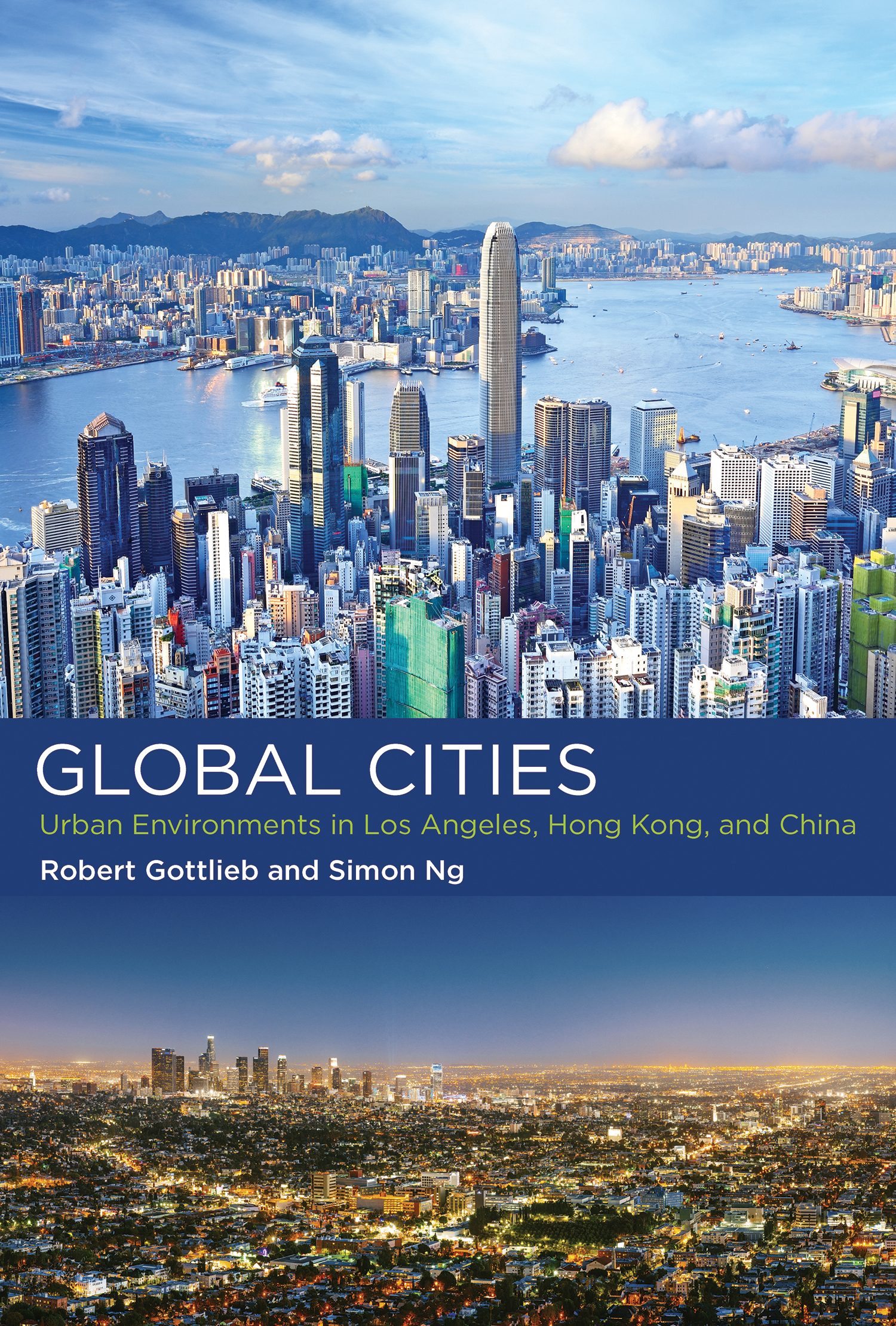At first glance, Robert Gottlieb and Simon Ng’s meaty overview of the environmental challenges of urban growth in Los Angeles (LA), Hong Kong and China does not seem to offer us a wealth of new information.
The academic and consultant write about LA as the car-dominated “capital of sprawl”; Hong Kong as the densely populated vertical metropolis; how mainland China’s rural-to-urban migration transformed farmland into megacities; and how the growth of all these urban forms – facilitated by globalisation and shifting work and consumption patterns – have had serious environmental impacts.
 But, obscured by its vague title, this book is really an analysis of environmental and social change: why and how it can happen, and the complicated matrix of actors at play which drive it forward or hinder its success.
But, obscured by its vague title, this book is really an analysis of environmental and social change: why and how it can happen, and the complicated matrix of actors at play which drive it forward or hinder its success.
Global Cities is divided into six different environmental aspects of urban and economic growth: goods movement; air quality; water; food systems; transportation and open space. These discussions culminate in the crux of the issue: a reflection on the role of social movements in effecting policy change and larger transformation.
LA’s label as the US’s most polluted environment has stuck with the city for 60 years. As the authors explain, the air quality protests following the extreme smog of the 1950s-60s anticipated the rise of a local grassroots environmentalism that would influence policy at a regional and state level. By the 1970s, LA’s environmental groups began to have significant impact on legislation.
In 2006, as a result of grassroots organising and litigation, the city passed the Clean Air Action Plan, supplemented by the emission-reducing Clean Trucks Plan the following year. In 2011, a number of groups and activities mobilised, with the help of city officials, to establish the Los Angeles Food Policy Council, in part to “foster environmental stewardship”.
Community pressure for increased bike infrastructure led incumbent mayor Eric Garcetti to publish the “Mobility 2035” plan for the city, aiming to expand bike and rail infrastructure, calm traffic and reduce car use. There has been important policy progress – and community victories – but LA remains the most polluted city with the most congested traffic in the US.
Hong Kong’s growth, from 2 million inhabitants in 1950 to 7.3 million in 2016, tells a wider story of economic, social and environmental transformation in China over the last half century. As the city became a vital manufacturing centre and exporter, urban growth followed suit, with massive transport and housing development. This growth triggered regional industrialisation, and today the Pearl River Delta is one of the most industrialised, urbanised and populated areas in China.
The environmental problems caused by this growth – air pollution generated by traffic and industrial activity; a lack of open space due to pressure on land; loss of farmland; dependence on imported water – led to the creation in 1977 of the Environmental Protection Unit, but this had limited impact due to the city’s constantly shifting bureaucratic structures.
Efforts to control car use emerged in the 1980s but it has been the last decade which has seen signs of progressive change: the 2011 Fair Winds Charter committed to reduce ship emissions; the 2013 Clean Air Plan prioritised improving air quality; and urban agriculture projects proliferated so that by 2013 there were 480 organic farms in Hong Kong alone. Nevertheless, change is slow, and Hong Kong’s air pollution is now worse than LA’s, and pedestrian and cycling infrastructure continue to be overlooked.
Global Cities also gives an overview of the wider context of urban expansion in mainland China, tracing this from the late 1970s shift to market-based capitalism, through the enormous rural-to-urban migration, to the current air pollution crisis. The government has been slow to openly recognise the problem, but 2013 saw the first national air pollution action plan and 2015’s first issue of a “red alert” for air pollution.
So why contrast Los Angeles with the Chinese context? Trade is the starting point. LA has been a major destination for China’s growing export products. LA has also seen large-scale immigration from China, in addition to significant investments by Chinese companies in the city’s real estate.
A city’s growth does not happen in a vacuum: it is enabled by a global network. The authors suggest the same networks can help facilitate the spread of environmental progress. Cities like LA and Hong Kong are the primary actors today in influencing and impacting local, national and global environmental change, expressing as they do the array of challenges and opportunities at play.
Beyond international connections, the most compelling issue tackled in the book is that of the role community plays in policy change, and how policy effects wider transformation. Grassroots environmental justice campaigns and public pressure have indeed led to slow, eventual changes in policy (more so in LA than China), but pushback of political, commercial and community interest groups, in addition to the difficulties of behavioural and systemic change, have been significant hurdles to success.
“All too often, policy change occurs only under extreme public pressure or crisis,” Gottlieb and Ng explain. “Minimally responsive, crisis-driven government has encouraged a new generation of social activists resorting to more radical tactics.” There is still a long way to go if these shoots of change are to grow into systemic transformation, and as climate change accelerates, the need to shake up the status quo becomes more urgent.
The issues and questions Global Cities raises about the route to systemic change when tackling climate change in an increasingly populated, urbanised world, provide a vital springboard to anyone thinking about the future of our planet.
Global Cities – Urban Environments in Los Angeles, Hong Kong and China (MIT Press) by Robert Gottlieb and SImon Ng is available now.






